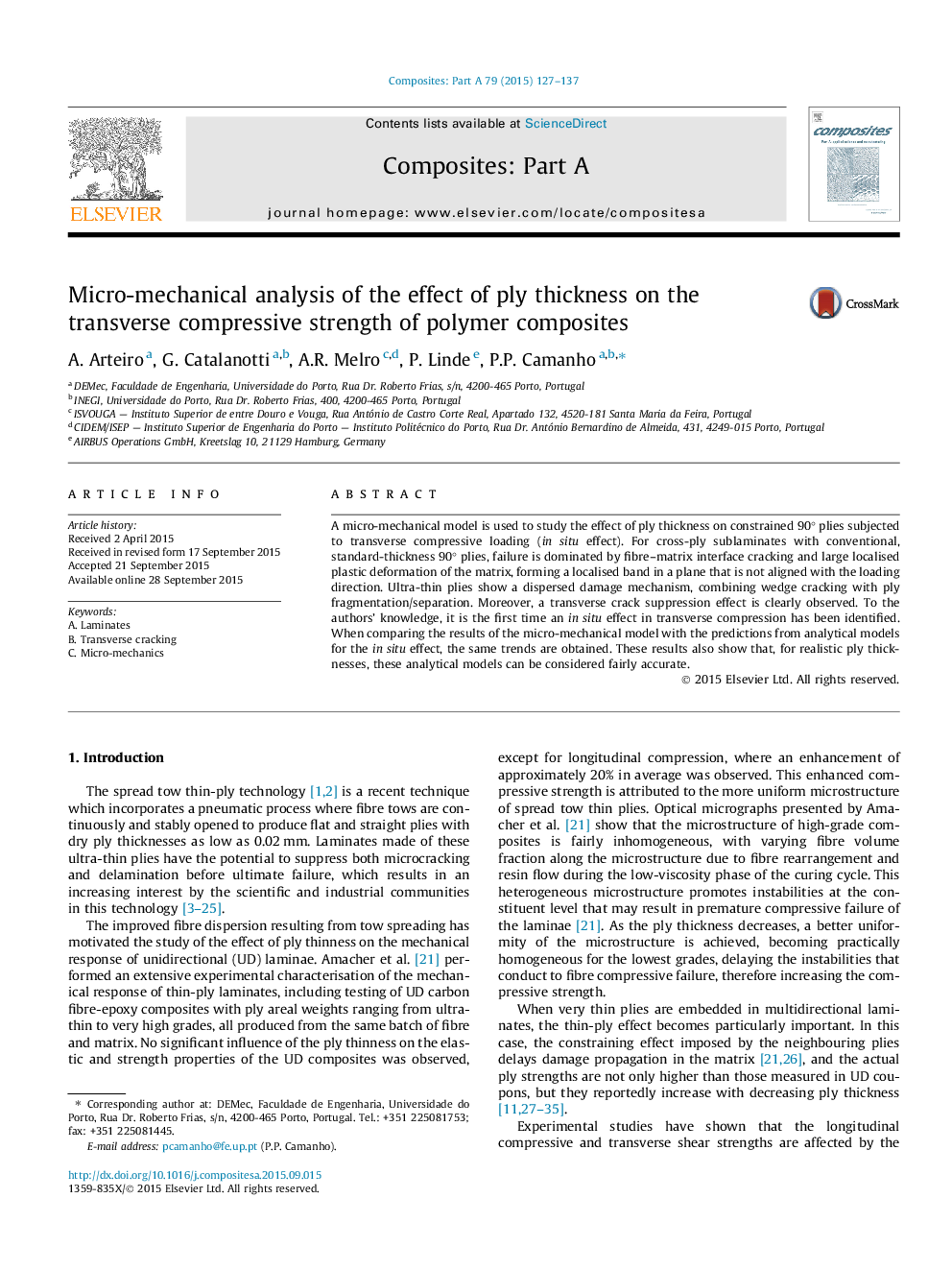| Article ID | Journal | Published Year | Pages | File Type |
|---|---|---|---|---|
| 1465845 | Composites Part A: Applied Science and Manufacturing | 2015 | 11 Pages |
A micro-mechanical model is used to study the effect of ply thickness on constrained 90° plies subjected to transverse compressive loading (in situ effect). For cross-ply sublaminates with conventional, standard-thickness 90° plies, failure is dominated by fibre–matrix interface cracking and large localised plastic deformation of the matrix, forming a localised band in a plane that is not aligned with the loading direction. Ultra-thin plies show a dispersed damage mechanism, combining wedge cracking with ply fragmentation/separation. Moreover, a transverse crack suppression effect is clearly observed. To the authors’ knowledge, it is the first time an in situ effect in transverse compression has been identified. When comparing the results of the micro-mechanical model with the predictions from analytical models for the in situ effect, the same trends are obtained. These results also show that, for realistic ply thicknesses, these analytical models can be considered fairly accurate.
